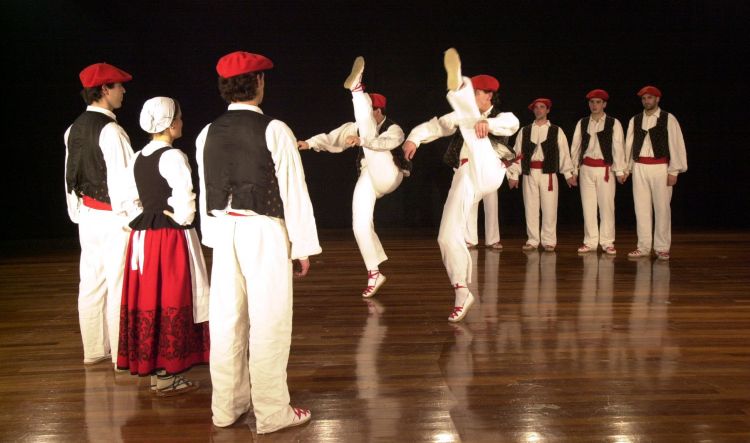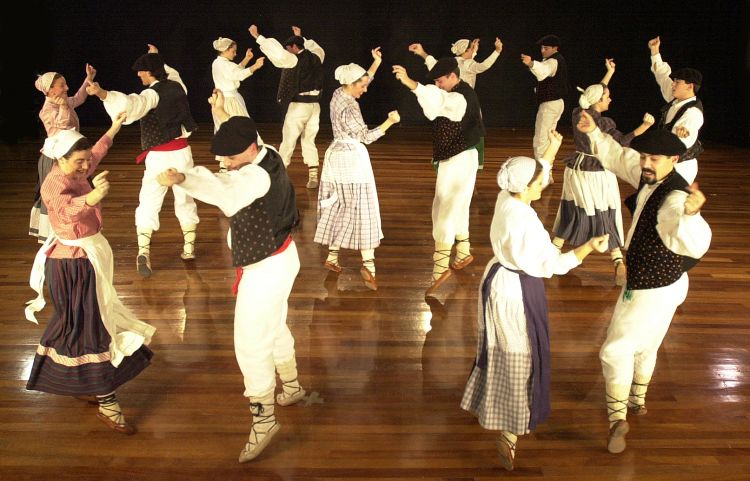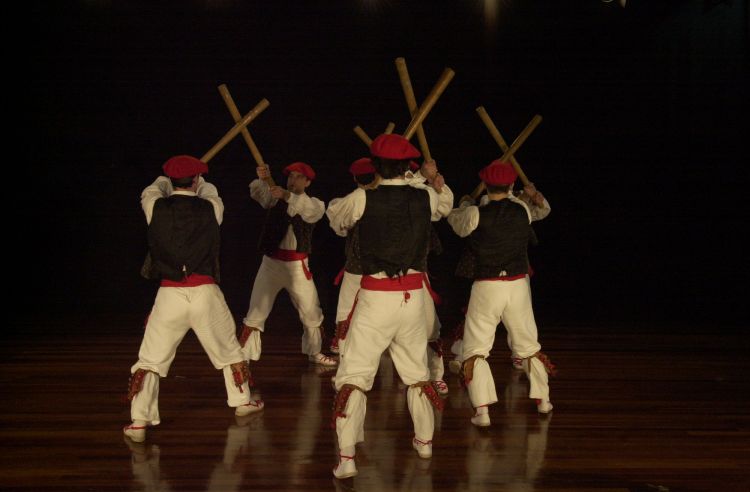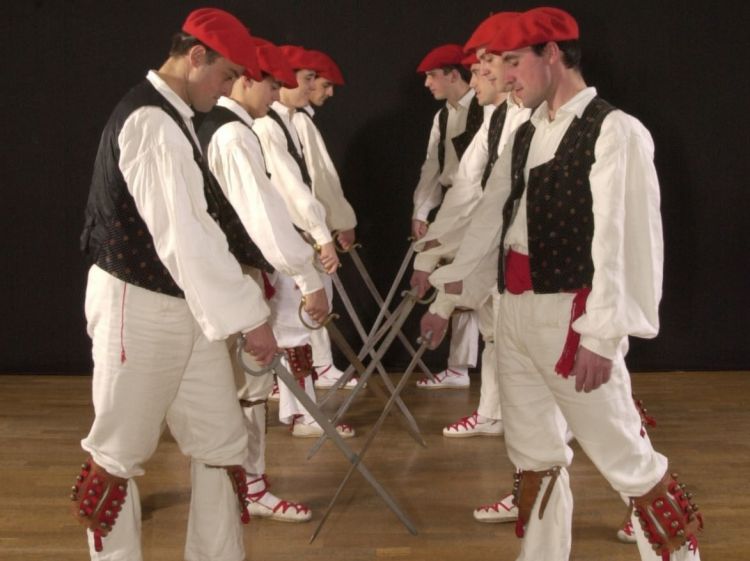Lekeitioko Aurreskua
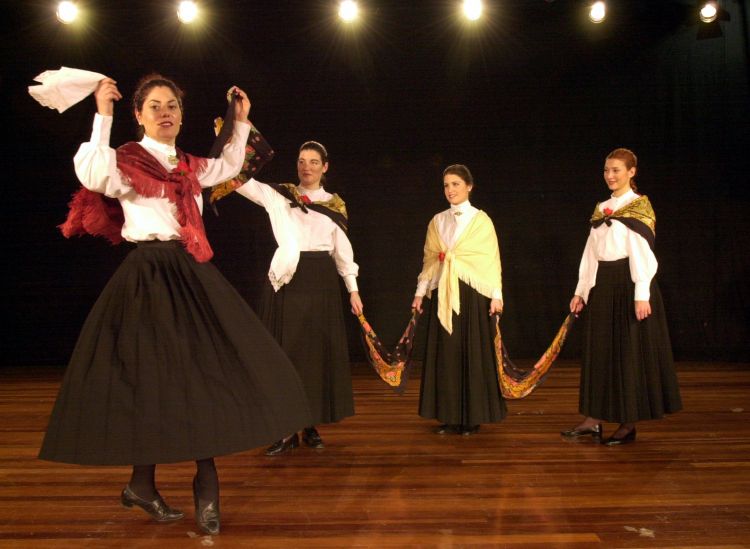
The dance called Aurresku or Soka Dantza de Lekeitio belongs entirely to the choreographic structure of the Soka Dantzak, that is to say, the Rope Dances, or those where the dancers form a chain by holding hands or using other items, such as handkerchiefs.
It is also a dance that belongs to a very speficic place, which is the harbour in Lekeitio, which could explain the origin of the dance.
The fact that it is a seafaring community, where in general the men work out at sea, while the women perform the work more connected with the port itself (looking after the children and the home, as well as selling the fish, negotiating the prices, repairing the nets and a long list of other tasks), may be of interest as the Soka Dantza, which is traditionally danced by men inland to the point that it called Gizon Dantza (the men's dance), is here performed by a group of women.
In his "Danzas de Guipuzcoa", Juan Ignacio IZTUETA cites some performances by young or married women that may be related to the dance being considered here, but these links have not been confirmed by any of the researchers that we have consulted.
We are therefore faced with a dance, structured in a semi-circular, what is performed anti-clockwise, and which is mainly performed by women, even though there are some cases of men being involved when it is performed in honour of women. It thus seems that values reverse in a society where the men leave the home and the women are left nearly exclusively in charge of supporting the family.
Before delivering an opinion or an interpretation that is too exclusive regarding the choreography, we should bear in mind the fact, as noted by Mircea ELIADE, that the masculine initiation rituals have generally been imitated by women in their own rituals and there are also cases of the contrary taking place.
The dance in question seemed to be formed three times during the festivity of San Juan, the 24th of June, following early morning mass, following High Mass, and finally, once the evening Rosary had been said.
Clothing
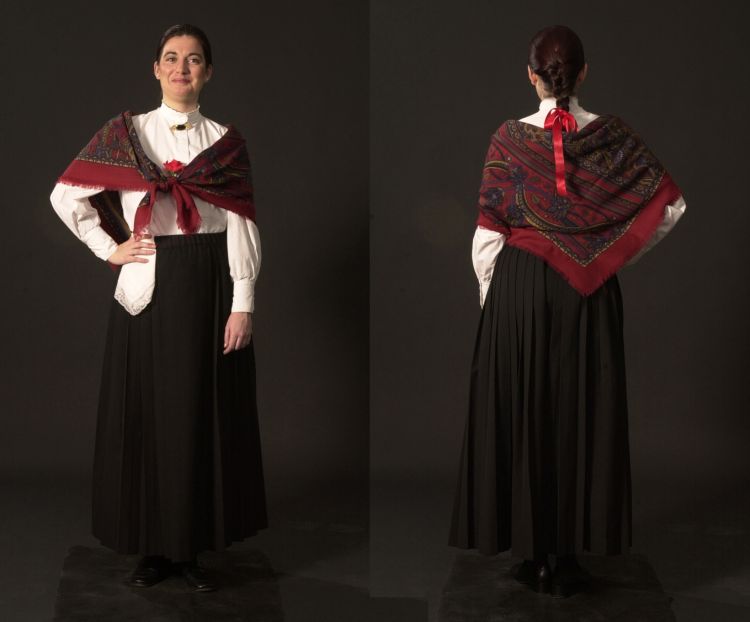
The costumes that are currently used to dance the Aurresku de Mujeres date back to the 19th century, with long black skirts and white shirts and wearing embroidered silk shawls, that were so typical at the time, on their shoulders. This last point shows the tie between this dance and the Verbena del Mantón de Ramales, in Cantabria.
Implements
We are not aware of any implements used to perform this dance.
Music
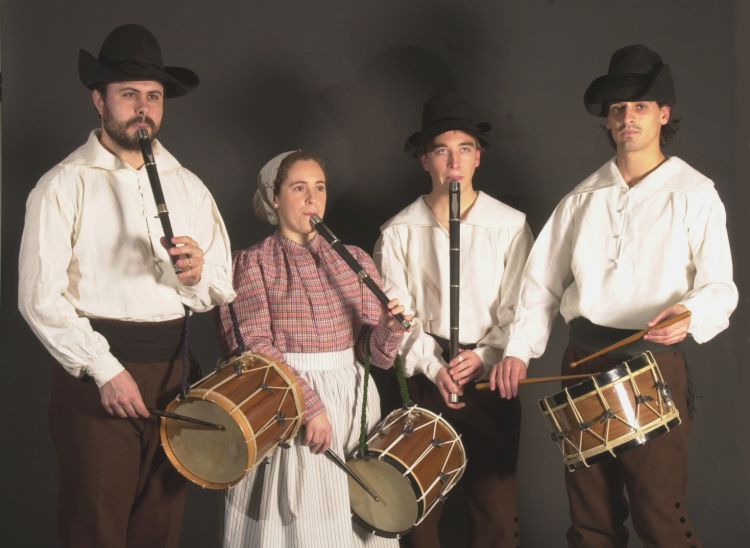
As it is a dance recreated throughout the 20th century, the only instruments we are aware of are the txistu and the tabor drum.
History and Geography
With respect to the geography, we are faced with an unusual fact as it is the sole example in the historical territory of Bizkaia, as, even though women are honoured in certain places, or even play the more important role (as in Garai), there is no other place where they are in charge of opening a chain dance. As far as its history is concerned, as we do not have any significant data on it, we can only associate it with the Soka Dantza in general, whose origin is uncertain, but which can be traced back to the 15th and 16th centuries.

